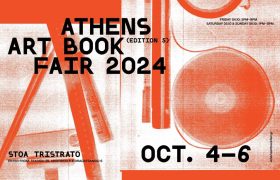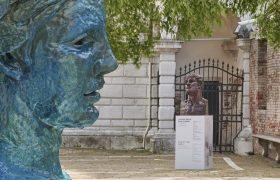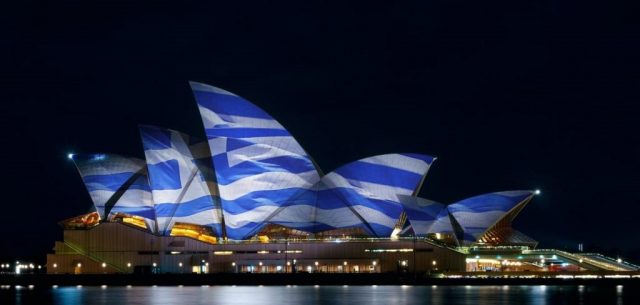What you can expect at Athens’ new National Gallery
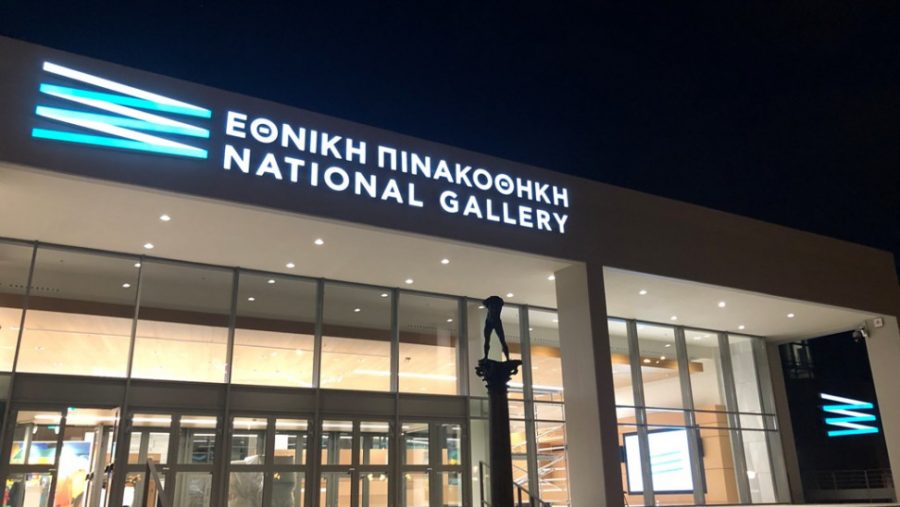
Greece’s National Gallery is home to some of the world’s most coveted artworks, yet it spent a better part of its 143-year existence homeless and abandoned. All that is about to change as the new National Gallery opens its swanky doors on March 24 in Athens’ Pangrati district. A bright and cheery triptych by Panagiotis Tetsis with vibrant scenes from the local farmers’ market greets visitors. Sculptural masterpieces adorn its outdoor space, including Costas Varotsos’ Spiral that seems engaged in conversation with the Runner just across the avenue. But more than anything, we are thrilled that the National Gallery is a remarkable addition to Athens’ rich cultural repertoire. You may not have been among the glitterati and Heads of State present at the inauguration but we give you a sneak peek on what you can expect at the newly renovated National Gallery.
Brief History:
It started off as a modest collection of 117 works, displayed as part of a permanent exhibition at the Athens University in 1878. In 1896, Alexandros Soutzos, a jurist and art lover, bequeathed his collection and estate to the Greek Government with the express wish of creating a national art museum. The museum opened in 1900 and the first curator was Georgios Iakovides, a famous Greek painter, a proponent of the Munich School artistic movement.
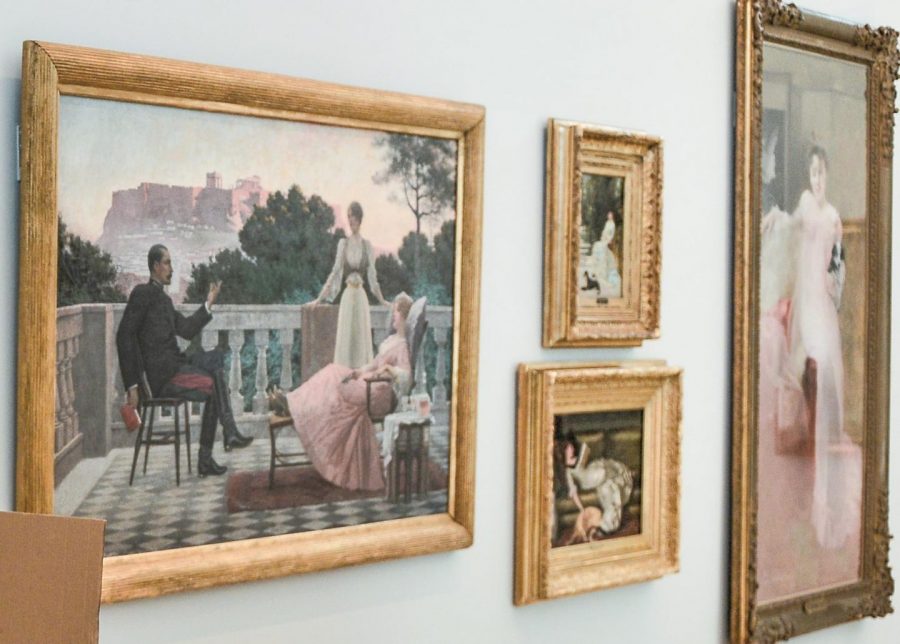 Collections:
Collections:
A custodian of Greek art and heritage, The National Gallery’s collections comprise more than 20,000 works of paintings, sculptures, engravings and other forms of art. The gallery exhibitions are mainly focused on post-Byzantine Greek Art but it also owns and exhibits also an extensive collection of European artists. Particularly valuable is the collection of paintings from the Renaissance. Expect to see original artworks by El Greco, Eugene Delacroix Piet Mondrian, Auguste Rodin, Pablo Picasso and Greek artists such as Theodoros Vryzakis, Spyros Vassiliou and Dimitris Mytaras.
Its name:
In 1954, the National Gallery merged with the Alexandros Soutzos Estate, hence its name. It houses an extensive library with invaluable archival material and specialized conservation studios, equipped with up-to-date scanning, examination and restoration systems. There is a wing funded and named after the Stavros Niarchos Foundation.
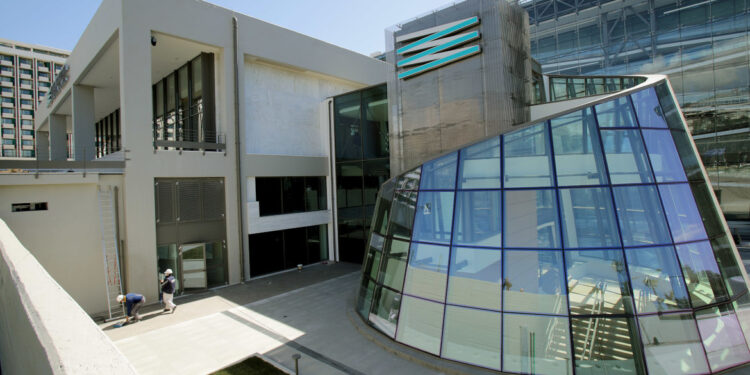 The new gallery:
The new gallery:
Marina Lambraki-Plaka, the grand doyenne of The National Gallery describes it as ‘a project that will fill all Greeks with happiness and pride.’ The building with its translucent façade makes it a modern, functional museum, at the intersection of the city’s other architectural landmark, the iconic Hilton Athens and Costas Varotsos’ ‘The Runner,’ just below Mt. Lycabettus.
- A 11,000 sqm building in addition to the existing 9,720 sqm, doubling its space to 20,000 sqm.
- An additional 2,000 sqm of exhibition space, 1600 sqm of warehouses
- An auditorium seating 450 and an educational venue
- A 1000sqm museum shop
- A third-floor restaurant with panoramic views of the Acropolis and all of Athens.
- Another cafe will operate on the ground floor and garden.
- The museum will be modernized, acquiring visitor access ramps, the required elevators and stairs, disabled access.
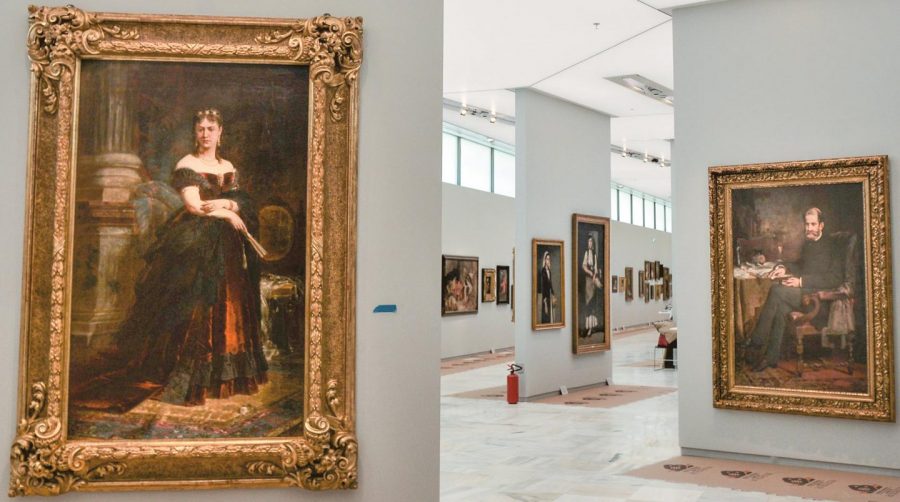 The 1821 bicentennial anniversary exhibition:
The 1821 bicentennial anniversary exhibition:
The exhibition is set up on the first floor for the 200 years since the beginning of the Revolution, with paintings on the subject of the struggle for independence and heroes of the Revolution of 1821, as well as a section with works by Greek artists (portraits, landscapes etc) of the 19th century.
The artwork in the lobby:
The piece that will welcome the public is Panayiotis Tetsis’ monumental ‘Farmer’s Market’ (1983) by Panayiotis Tetsis. It was deliberately chosen to symbolize that the National Gallery is accessible to all, everyone who knows about art and those seeking the tools to learn about it.
Future exhibitions:
Mark your calendars for the much-anticipated ‘Art of Portraiture’ from the Louvre, slated to take place in autumn after the museum’s grand reopening.
Floors 2 and 3:
The rest of the floors will showcase the National Gallery’s collection of paintings from the 19th and 20th century.
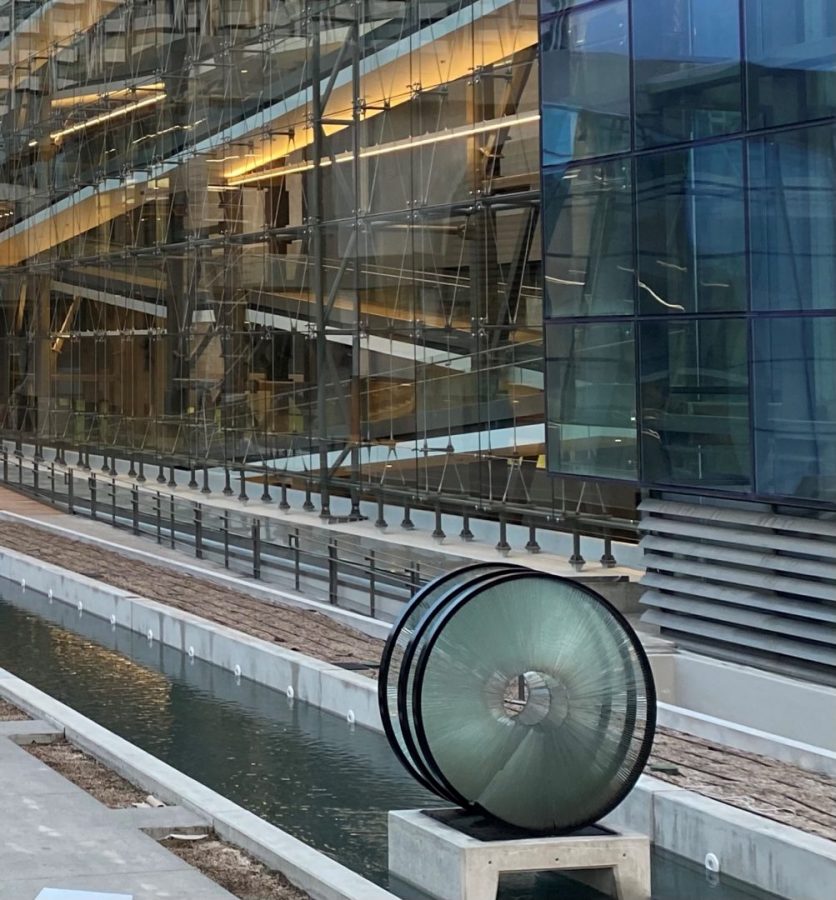
The Sculpture Garden
The exterior is adorned with works of art by Auguste Rodin, a sculpture by the late Takis dominates the main entrance; just below the bridge that connects the reception area with the Stavros Niarchos Foundation Wing, Costas Varotsos’ Spiral, a fluid sculpture in glass that radiates hope stands tall in a canal of water, symbolically representing the Ilissos which used to flow in the area.


